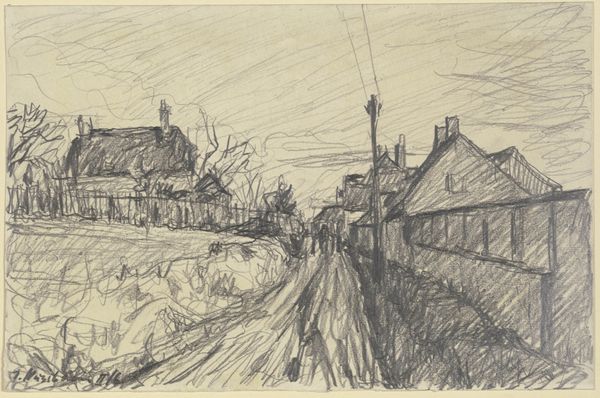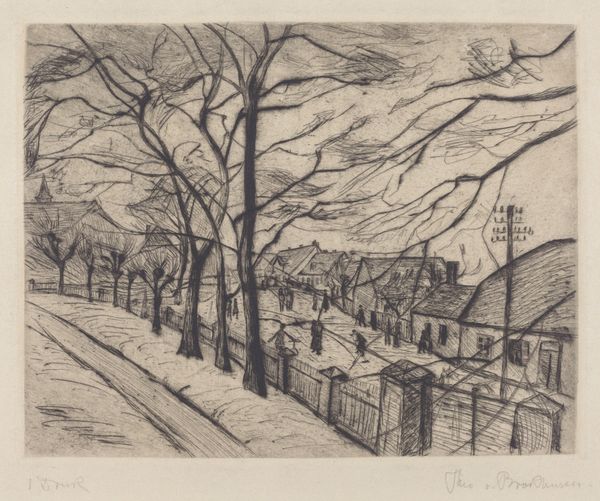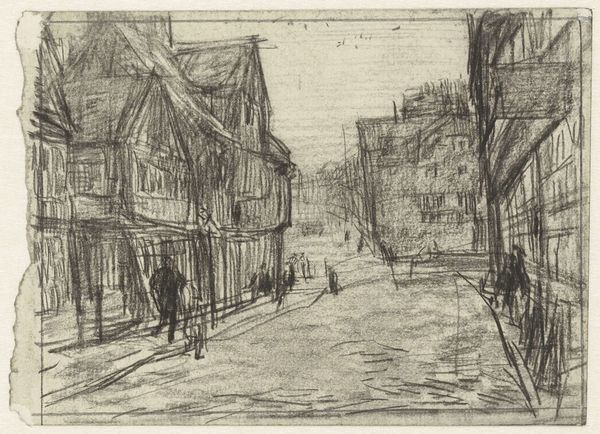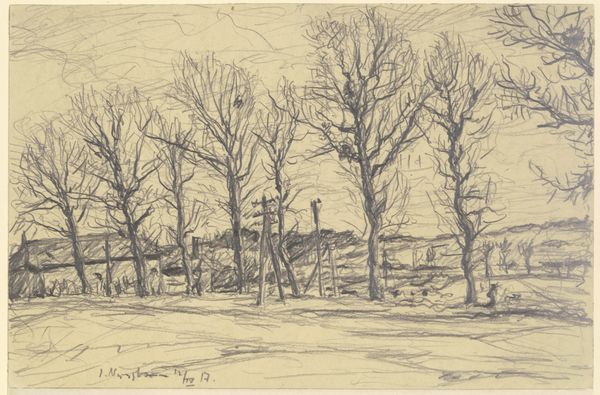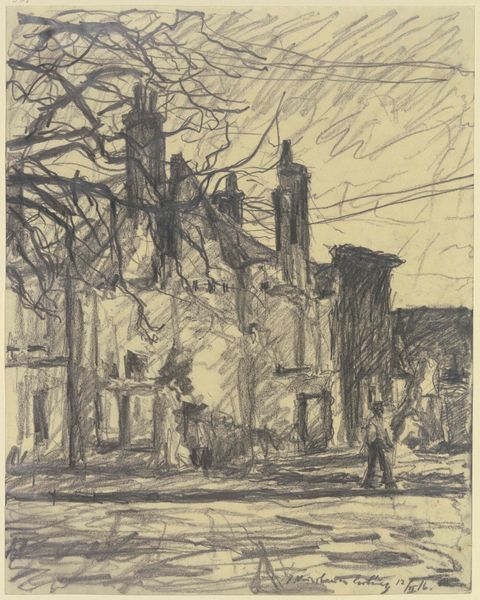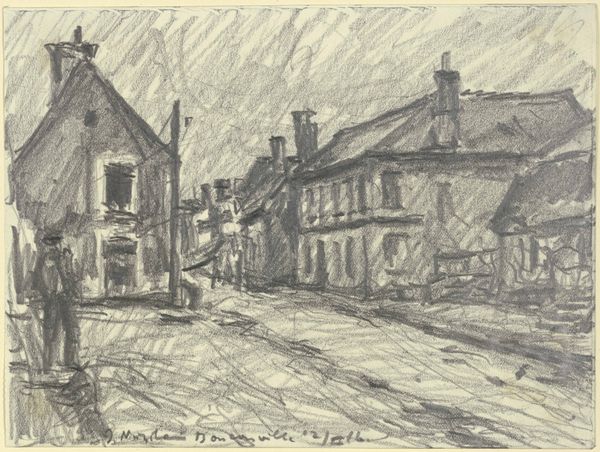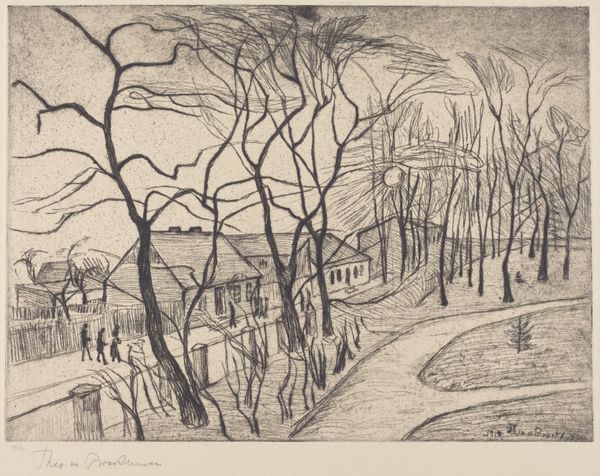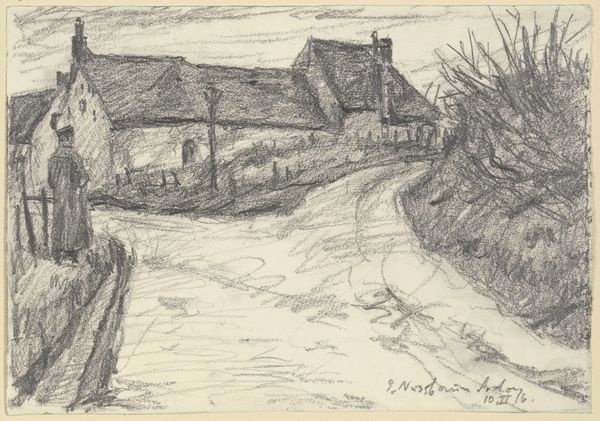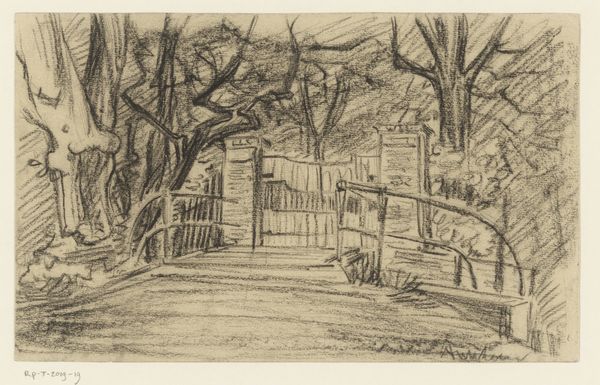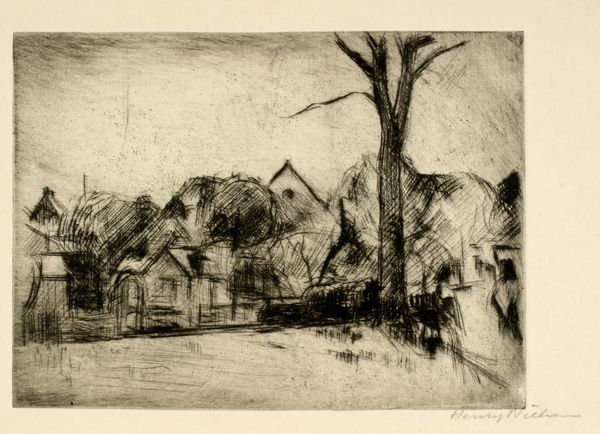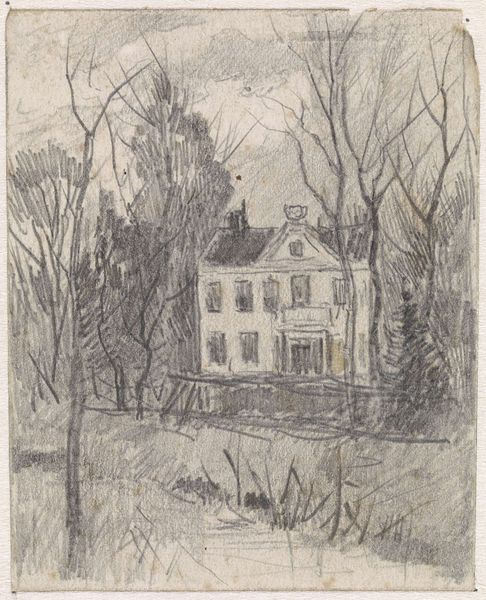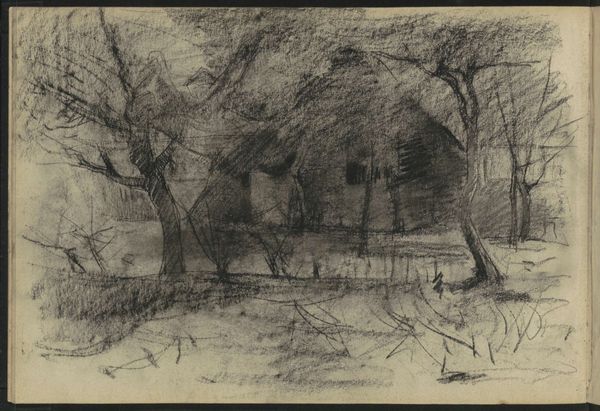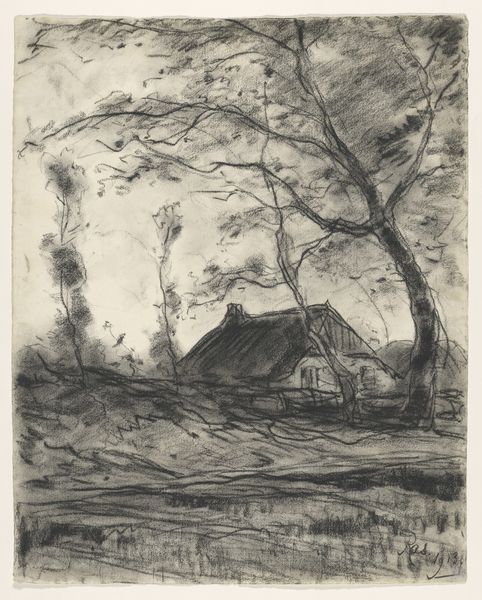
drawing, paper, pencil, graphite, architecture
#
drawing
#
landscape
#
paper
#
pencil
#
graphite
#
cityscape
#
architecture
Copyright: Public Domain
Editor: Here we have Jakob Nussbaum's "Street picture from Laon," created in 1916 using graphite and pencil on paper. I'm immediately struck by the starkness of it all. The bare trees and looming architecture create a slightly ominous feel. What compositional elements do you find most compelling? Curator: The emphasis lies, primarily, in Nussbaum's handling of line. Observe how the architecture is built from quick, almost frantic strokes. These lines are not merely descriptive; they constitute the very essence of form, lending the cityscape a palpable tension. What does that choice suggest to you? Editor: Well, it feels less about capturing the literal appearance of the buildings and more about conveying a feeling or impression. Maybe a sense of unease? Curator: Precisely. Note also the use of light and shadow – or, rather, the almost complete absence of conventional shading. The scene is rendered in a predominantly grayscale palette, which contributes to the sense of starkness you initially observed. How does the artist's mark-making inform the narrative or atmosphere of the scene? Editor: It's as if the sketchiness and lack of detail add to the unsettling atmosphere. If it were more refined, the scene might feel more peaceful, but here the roughness conveys a sense of disquiet. Curator: An astute observation. The formal elements here work to create an immersive scene which effectively represents more than just what is obviously seen. Considering the historical context, might this aesthetic quality contribute to a deeper, more affecting appreciation of this visual artifact? Editor: It's been fascinating to see how the line quality and lack of colour saturation so strongly impact the artwork. Curator: Indeed. Reflecting on it further, this close examination allows us to go beyond a literal interpretation, to see how line and form shape our emotional experience.
Comments
No comments
Be the first to comment and join the conversation on the ultimate creative platform.
